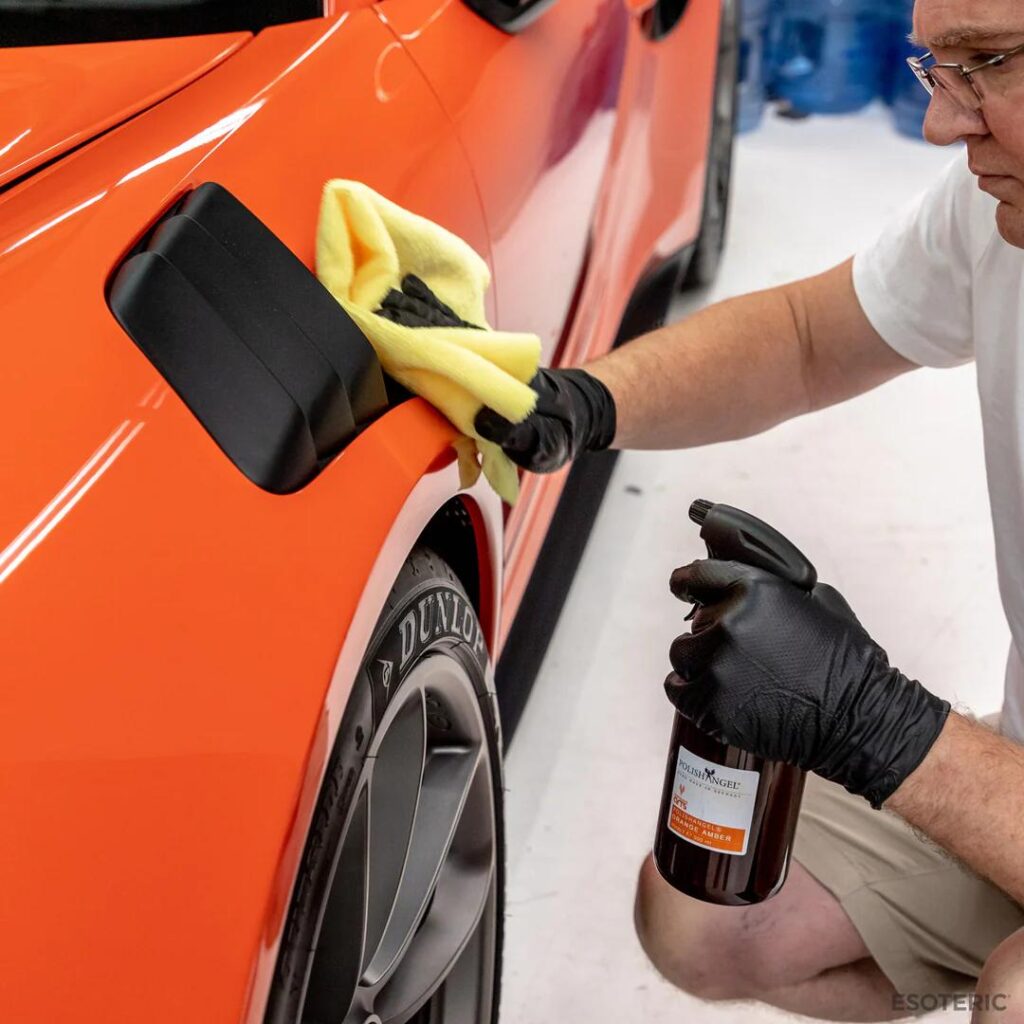As an Amazon Associate, I earn from qualifying purchases
Leather car seats add luxury and comfort to any vehicle, but they require proper care to maintain their appearance and durability. Without regular cleaning and maintenance, leather can crack, fade, and develop permanent stains that diminish your car’s value and aesthetic appeal.
Many car owners feel intimidated by leather care, assuming it requires expensive professional services. The truth is that cleaning leather seats is straightforward when you know the proper techniques and products to use. With basic supplies and a systematic approach, you can keep your leather seats looking pristine for years.
This guide will walk you through everything you need to know about cleaning leather car seats, from understanding why regular maintenance matters to step-by-step cleaning instructions and preventive care tips.
Table of Contents
- 1 Why Cleaning Leather Seats is Important for Your Car
- 2 Step-by-Step Guide: How to Clean Leather Seats in Your Car
- 3 Best Products and Tools for Cleaning Leather Seats
- 4 How to Prevent Cracks and Damage on Leather Seats
- 5 Keep Your Investment Looking Its Best
- 6 Frequently Asked Questions About Clean Leather Seats in a Car
Why Cleaning Leather Seats is Important for Your Car
Regular leather seat maintenance serves multiple purposes beyond just appearance. Understanding these benefits will help you establish a consistent cleaning routine.
Preserves Your Vehicle’s Value
Clean, well-maintained leather seats significantly impact your car’s resale value. Cracked, stained, or worn leather can reduce your vehicle’s worth by thousands of dollars. Regular cleaning prevents deterioration that becomes costly to repair or replace.
Extends Leather Lifespan
Leather is a natural material that needs moisture and protection to remain supple. Dirt, oils, and debris act like sandpaper, gradually wearing down the leather’s surface. Regular cleaning removes these abrasive particles before they cause permanent damage.
Maintains Comfort and Hygiene
Leather seats absorb sweat, spills, and odors over time. Without proper cleaning, bacteria can build up, creating unpleasant smells and potentially unhealthy conditions. Clean leather seats provide a more comfortable and hygienic driving environment.
Prevents Costly Repairs
Small stains and minor wear are easily addressed with regular cleaning. However, neglected leather often requires professional restoration or complete replacement, which can cost hundreds or thousands of dollars.
Step-by-Step Guide: How to Clean Leather Seats in Your Car
Follow these detailed steps to clean your leather seats effectively without causing damage.
Step 1: Gather Your Supplies
Before starting, collect all necessary materials:
- Leather cleaner (pH-balanced specifically for automotive leather)
- Leather conditioner
- Microfiber cloths (at least 3-4 clean ones)
- Soft-bristled brush or old toothbrush
- Vacuum cleaner with upholstery attachment
- Distilled water
Step 2: Remove Loose Debris
Start by vacuuming the seats thoroughly. Use the upholstery attachment to remove crumbs, dirt, and debris from crevices and seams. Pay special attention to the areas where the seat back meets the cushion, as debris commonly accumulates there.
Step 3: Test in an Inconspicuous Area
Before applying any cleaner to visible areas, test it on a hidden section of the seat, such as the back corner or under the seat. Wait a few minutes to ensure the cleaner doesn’t cause discoloration or damage.
Step 4: Apply Leather Cleaner
Spray the leather cleaner onto a microfiber cloth rather than directly onto the seat. This prevents over-saturation and ensures even application. Work the cleaner into the leather using circular motions, focusing on one section at a time.
Step 5: Address Stubborn Stains
For tougher stains, use a soft-bristled brush to work the cleaner into the leather gently. Apply light pressure and use small circular motions. Avoid scrubbing aggressively, as this can damage the leather’s surface.
Step 6: Wipe Clean
Using a clean, damp microfiber cloth, wipe away the cleaner and loosened dirt. Make sure to remove all cleaner residue, as leftover product can attract more dirt or cause the leather to become sticky.
Step 7: Allow to Dry
Let the seats air dry completely before applying conditioner. This typically takes 15-30 minutes, depending on humidity and temperature. Avoid using heat sources like hair dryers, which can crack the leather.
Step 8: Apply Leather Conditioner
Once dry, apply a small amount of leather conditioner to a clean microfiber cloth. Work the conditioner into the leather using gentle, circular motions. Conditioner should be applied sparingly – a little goes a long way.
Step 9: Final Buff
After the conditioner has been absorbed (usually 10-15 minutes), use a clean microfiber cloth to buff the leather to a natural shine. This removes excess conditioner and brings out the leather’s natural luster.
Best Products and Tools for Cleaning Leather Seats
Choosing the right products makes a significant difference in cleaning effectiveness and leather longevity.
Recommended Leather Cleaners
Look for pH-balanced cleaners specifically designed for automotive leather. These products are formulated to clean effectively without stripping the leather’s natural oils. Avoid harsh chemicals like bleach, ammonia, or generic household cleaners.
Quality leather cleaners should be gentle enough for regular use while strong enough to remove dirt, oils, and light stains. Many automotive supply stores carry reputable brands that have been tested specifically on car leather.
Essential Tools
Microfiber cloths are crucial for leather care because they’re lint-free and won’t scratch the surface. Keep several clean cloths on hand – you’ll need separate ones for cleaning, rinsing, and buffing.
A soft-bristled brush helps work cleaner into textured leather and removes stubborn dirt from grain patterns. Old toothbrushes work well for this purpose, but ensure the bristles aren’t too stiff.
Conditioning Products
Leather conditioner is just as important as a cleaner. Quality conditioners contain ingredients that penetrate the leather, restoring moisture and flexibility. Look for conditioners that don’t leave a greasy residue or attract dust.
How to Prevent Cracks and Damage on Leather Seats
Prevention is always better than repair when it comes to leather care. These strategies will help keep your seats in excellent condition.
Regular Cleaning Schedule
Clean your leather seats every 6-8 weeks, or more frequently if you use your car daily. Regular cleaning prevents dirt buildup and makes each cleaning session easier and more effective.
Protect from Sun Damage
UV rays are leather’s biggest enemy, causing fading, drying, and cracking. Use window tinting, sunshades, or park in shaded areas when possible. Consider UV-protective leather treatments for additional protection.
Maintain Proper Moisture Levels
Leather needs moisture to stay supple. Use a quality conditioner every 3-4 months, or more often in dry climates. Signs that your leather needs conditioning include a dull appearance or slight stiffness.
Address Spills Immediately
Clean up spills as soon as they occur. Blot liquids with a clean cloth rather than rubbing, which can push the spill deeper into the leather. The sooner you address spills, the easier they are to remove completely.
Control Temperature and Humidity
Extreme temperatures damage leather over time. If possible, park in climate-controlled areas and avoid leaving your car in direct sunlight for extended periods. Consider using leather protectants that help regulate moisture levels.
Keep Your Investment Looking Its Best
Proper leather seat care requires consistency and the right approach, but the effort pays off in maintained vehicle value, comfort, and appearance. By following these cleaning steps and prevention strategies, your leather seats will continue looking luxurious for years to come.
Remember that leather care is an ongoing process rather than a one-time task. Establish a regular cleaning routine, use quality products, and address issues promptly to enjoy the full benefits of your leather interior investment.
Frequently Asked Questions About Clean Leather Seats in a Car
Can I use household cleaners on my leather seats?
Avoid household cleaners like dish soap, all-purpose cleaners, or wipes containing alcohol or ammonia. These products can strip leather’s natural oils, cause cracking, or lead to discoloration. Stick to cleaners specifically formulated for automotive leather.
How often should I clean my leather car seats?
Clean leather seats every 6-8 weeks under normal use conditions. If you use your car daily, have pets, or frequently eat in your vehicle, you may need to clean them monthly. Light cleaning can be done more frequently if needed.
What’s the best way to remove stains from leather seats?
Act quickly when stains occur. Blot liquid spills immediately, then clean with a leather-specific cleaner and soft cloth. For set-in stains, use a soft brush with cleaner, working gently in circular motions. Stubborn stains may require professional treatment.
Can leather conditioner be used after cleaning?
Yes, conditioning should always follow cleaning once the leather is completely dry. Conditioner restores moisture and flexibility that cleaning may remove. Apply conditioner sparingly and allow it to absorb before buffing to a natural shine.
How do I protect leather seats from sun damage?
Use window tinting, sunshades, or park in shaded areas when possible. Apply UV-protective leather treatments every few months. Consider seat covers for extreme sun exposure, though quality leather treatments are usually sufficient for regular use.
As an Amazon Associate, I earn from qualifying purchases


